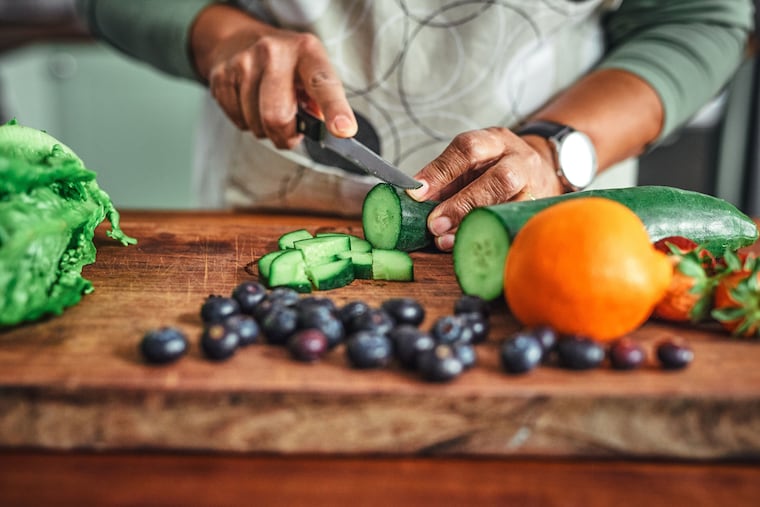Tips for overcoming age-related cooking challenges
Don't let age-related cooking challenges slow you in the kitchen.

Cooking at home is a mood-booster, exercises muscles and the mind, and can help us maintain a healthy diet, especially as we age.
But with age-related medical conditions come new challenges in the kitchen. People with dementia or memory loss may worry about forgetting the roast they put in the oven. Perhaps the meals you used to prepare for a family of five no longer make sense for a solo diner. Arthritis, lost muscle mass, decreased height, and vision problems can all affect how you cook.
Here are some tips to get the most out of home cooking.
Consider what you’re cooking
Research shows that people who cook for themselves eat out less often and consume less fast food, said Julia Wolfson, an associate professor at Johns Hopkins Bloomberg School of Public Health who studies food systems and food policy. That can be especially important for older adults, whose metabolism has slowed and who may be at risk for type 2 diabetes, high blood pressure, or high cholesterol — all medical conditions that are influenced by diet.
But, Wolfson said, “Just purely the act of cooking itself does not equal healthy eating.”
Get the most out of home cooking by planning meals that balance protein and high-fiber vegetables with fat and carbs. Think about portion sizes, and the amount of salt and sugar you use. For instance, packaged spice blends often contain lots of salt. Making your own spice blend may be one way to cut down on salt and amp up flavor.
» READ MORE: Try these easy, affordable, and healthy meal ideas from two local chefs
Stock the freezer
In a 2020 study, Wolfson and her former colleagues at the University of Michigan found that older adults were more likely than the general adult population to cook for themselves at home. But people’s relationship with food can change as they go through different life stages, such as children moving out or the death of a spouse.
Preparing and eating a favorite meal associated with fond memories can be comforting. Make the meal you love, then freeze leftovers in individual-serving packages, rather than in one large container. You’ll have dinner for the future and reduce the amount of time you have to spend cooking.
Load the slow cooker
Slow cooker meals are perfect for people who may have balance or strength issues that limit their ability to cook on the stove. Bending and lifting to use the oven can also become challenging with age.
Slow cookers sit on the counter, are designed to be left on all day, and are a good way to prepare larger meals that can be frozen, said Heath Jones, an occupational therapist with Wesley Enhanced Living Main Line, a senior living center in Media.
Eliminate access issues
Put everything you use most frequently in easy-to-reach spots, Jones suggested.
Plates and cups don’t have to live in high-up cabinets. Leave them on the counter.
Reorganize the refrigerator so that the items you need are within easy reach, without needing to bend down or dig to the back of the fridge. And when it’s time to replace your fridge, consider one with the freezer on the bottom or side, rather than on top.
Simplify cleanup
Disposable kitchen items, such as paper plates and aluminum pans, can make the difference between eating a healthy home-cooked meal or turning to processed foods. Too environmentally conscious to stock up on foil baking pans, paper plates, and plastic utensils? Line baking sheets with aluminum foil to avoid baked-on food that’s hard to scrub off. Try single-pan meals to at least reduce the number of dirty dishes.